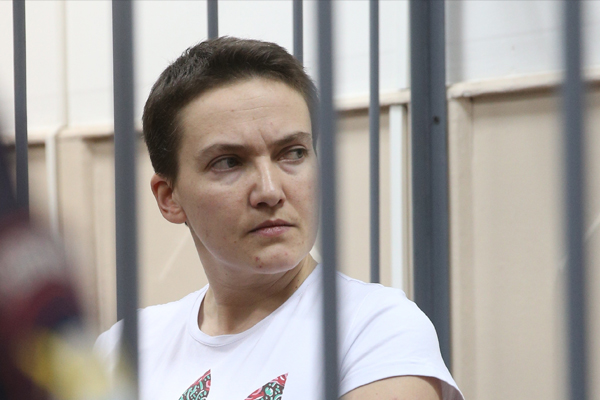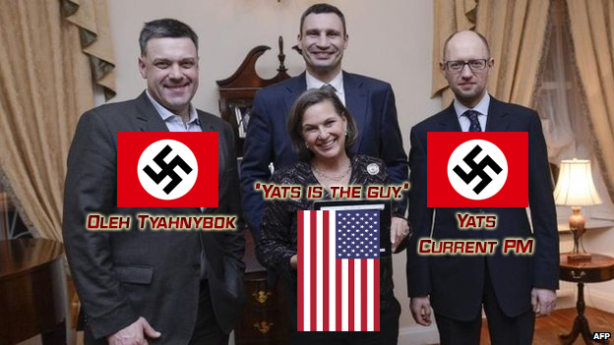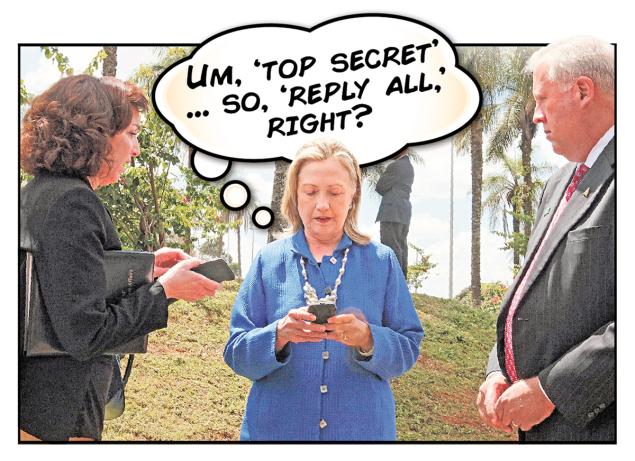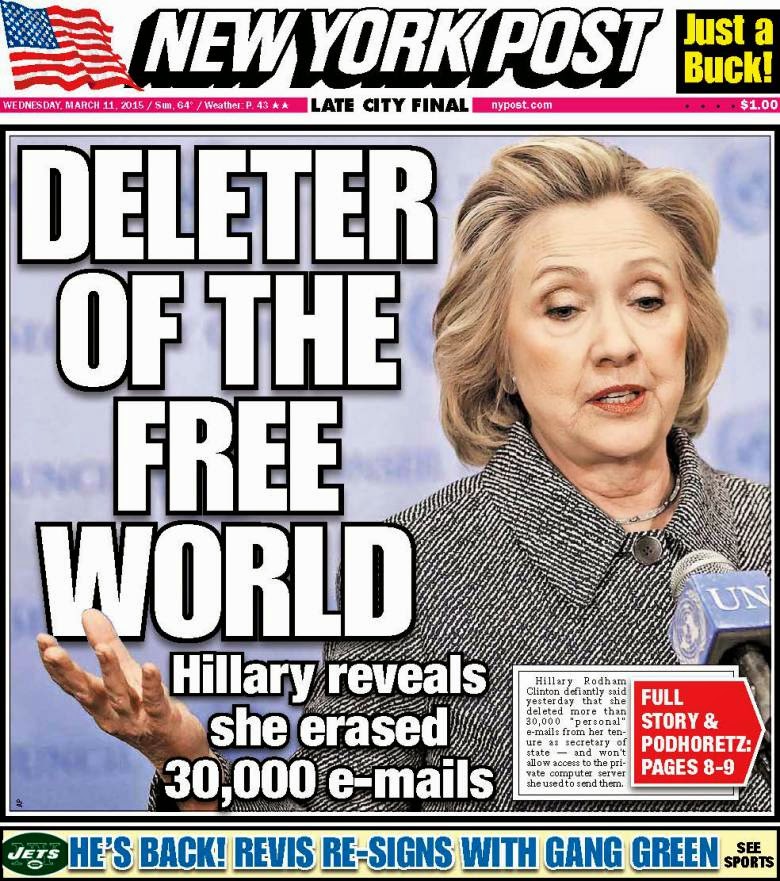This article was originally published by the NATO Defense College on 15 December 2015.
Introduction
Iranian and Russian versions of “hybrid” or “non-linear” warfare in Iraq and eastern Ukraine have had much in common. After the U.S.-led military intervention in Iraq in 2003, Iran hoped to check the U.S. military presence in Iraq as a whole by gaining influence in the predominantly Shi’a regions of the country, in large part through irregular warfare. Somewhat similarly, Moscow’s strategy and tactics inside eastern Ukraine since 2014 appear designed to counter NATO and European Union influence in Ukraine as a whole—in large part through techniques of “non-linear” or “hybrid” warfare aimed against Ukrainian forces backed by Kiev. Both Iranian and Russian strategies can be characterized as acts of preclusive imperialism intended to establish new spheres of influence and regional security.
In comparing Iranian and Russian strategy and military actions, Russia is, of course, much more advanced in military-technological capabilities. At the same time, both states have begun to rely on the use of special forces, irregular militias and “little green men” in the context of “non-linear” or “hybrid” warfare—in which the July 2006 war between Israel and Hizballah (backed by Iran) is generally considered the textbook example.
The concern raised in this analysis is that the tactics of anti-state militias, as developed in large part by Iran, are increasingly being adopted by Russia as well. In addition to engaging in a number of provocative and illicit activities outside eastern Ukraine, Moscow has threatened the use of tactical nuclear weaponry to assert its interests. This essay accordingly raises the question as to whether the covert and illicit nature of “non-linear” or “hybrid” warfare—as such warfare increasingly becomes more integrated into the general strategy and tactics of both major and regional powers—could actually inhibit the process of diplomatic compromise and make the possibilities of war between major powers more likely.
Concepts of Hybrid Warfare
The term “hybrid warfare” has begun to be adopted by many analysts, even if the construct does not appear to possess a precise meaning. The lack of a clear definition is largely due to the fact that the term represents an attempt to describe multiple dimensions of conflict for differing purposes, not only involving a plurality of possible adversaries (differing anti-state partisans, less powerful peripheral states, individuals, if not corporations, regional powers, and major powers), but also using a vast array of tactics (conventional, non-conventional and non-military). Tactics can include differing kinds of sanctions, social and political actions, as well as use of weapons with differing degrees of lethality that are often employed in innovative ways. The use of military force or other actions can then be rationalized by propaganda distributed by the mass media and the Internet. Such propaganda can be formulated in popular terms or even incorporate sophisticated analytical and legal justifications, if deemed necessary, to promulgate the cause.
Lack of clarity in the concept is also due to hybrid warfare’s apparently chaotic and uncontrolled nature. Yet this form of combat nonetheless requires some degree of political-military co-ordination if such “warfare”—which can break out unexpectedly during ostensibly “peaceful” circumstances and in situations in which actors could suddenly shift alliances—is to “succeed” in obtaining its goals.
In the past, states engaged in “compound warfare” in which irregular forces and privateers generally fought separately from the conventional armies of their time. Due to their separate theatres of action, state leaders could plausibly deny that they were backing those irregular forces. But the innovation in hybrid warfare is that regular and irregular forces can fight simultaneously, with the active, manipulated, or forced involvement of the population. At the same time, both military and non-military measures, such as “regime change” and “democracy engineering,” combined with peacekeeping/peacemaking, can be used to achieve social and political goals.
In this regard, hybrid warfare often uses both legal and illicit tactics and both military and non-military actions that directly impact and involve populations. Yet the adoption of illicit and non-conventional methods by legitimate state leaderships makes it generally more difficult for those leaderships to sustain plausible deniability. This raises deeper suspicions of intent, while concurrently undermining trust and the possibility of negotiated settlements.
Novel Techniques and Goals
Even if decrypting codes has historically represented a significant dimension of warfare, cyber-sabotage does appear to be a novel aspect of hybrid warfare that additionally generates greater distrust among rivals—as do “false flag” warfare, suicide missions, insider attacks, hijacking of commercial airliners as weapons of war, and the use of humanitarian assistance to smuggle supplies, arms and troops, and so on. Cyber militants can now steal valuable information from both the private and public sectors and disrupt communications or dislocate/deactivate vital infrastructure.
As a form of cyber-sabotage, the Stuxnet malware was purportedly used by the United States and Israel against embargoed Siemens computer systems at Iran’s Natanz nuclear facility, where Iran was suspected of enriching uranium for military purposes. The Stuxnet malware may have also been used against a Russian nuclear power plant. Acts of Russian cyber-sabotage accompanied both the August 2008 Georgia-Russia war and the 2014-15 Ukrainian conflict.
The key issue raised by the Stuxnet attacks is not so much that the computer virus could spread out of control, but that state and anti-state actors that possess the appropriate know-how can develop such malware, leading it to proliferate much more easily than nuclear weaponry— and with potentially devastating results. The fact that both Russian and Iranian officials denounced the use of the Stuxnet malware as “an act of war” indicates the real possibility that such attacks could spark wider conflicts. At the same time, the clandestine nature of cyber-sabotage raises uncertainties as to who is the attacker, and thus against whom to retaliate.
New technologies have not only opened the door for ways to make weapons more accurate, as is the case for dual-use cruise missiles with ambivalent nuclear/ conventional capabilities, but they can also make the “art” of war less expensive. Miniature drones can now be used as weapons both for spying and for warfare.Hizballah purportedly used drones for spying in the July 2006 war and in 2012 against Israel. In May 2015, Ukrainian forces shot down advanced drones (purportedly “made in Russia”) over eastern Ukraine. This makes drones and other innovative technologies, such as the 3-D printing of guns, ideal for hybrid warfare.
The strategic goals of hybrid warfare by anti-state insurgents, such as Hizballah against Israel in Lebanon, and other pro-Iranian militias in Iraq since 2003, have been to jack up the overall “costs” of the Israeli and American military interventions in terms of manpower, material and domestic political support, so that the adversary will ultimately give up the “occupation.” Similarly, in case of “autonomist” movements in eastern Ukraine, the purpose of such warfare is likewise to prevent Kiev from asserting centralized control over the region.
In the case of Iran and Russia, as state actors, the immediate purpose of hybrid warfare may be to harass, disorient and threaten the U.S. and NATO respectively just to the point of direct conflict, but then draw back in a new form of “brinksmanship.” The goal is to take advantage of gaps in the rivals’ defenses, in social, political, economic and military terms where possible, by using differing kinds of attacks or threats in succession, or even simultaneously. The ultimate purpose is to weaken U.S. and/or NATO resolve and attempt to undermine American global hegemony.
Yet what appears to make hybrid warfare more dangerous than traditional or more “overt” forms of warfare is that its covert and illicit actions often seek to provoke and purposely set off other extraneous conflicts. The latter conflicts could become virtually unmanageable due to the tendency of such warfare to undermine cooperative relationships within and between societies, resulting in the collapse of mutual trust. Hybrid warfare—as a new form of brinksmanship—accordingly risks direct conflict between major powers, if geostrategic and political-economic compromises cannot soon be obtained between rival socio-political groups and states and if trust cannot be restored.
Russian Perspectives
While the term “hybrid warfare” has generally entered into U.S. and European military analysis, Russian elites have tended to use the term “non-linear” war. Russian concepts have largely developed in response to U.S.-led military interventions in Kosovo/Serbia (1999), Afghanistan (2001), Iraq (2003) and Libya (2011). Each of these interventions involved a mix of high-tech warfare and use of airpower and pinpoint cruise missile strikes, not to overlook the key role of special forces in the initial attacks, generally followed by the deployment of conventional forces. The next step after the defeat of the above regimes has been to alter their leadership and form of government. This stage, which often involves the implementation of destabilizing social and political reforms, has been backed by the deployments of UN, coalition, or NATO peacekeepers/peacemakers—in an attempt to stabilize and legitimize the new regime.
In January 2013, Russian Chief of Staff Valery Gerasimov outlined Russian concepts of “non-linear” warfare, which involve regular and irregular forces and military and non-military measures, plus the manipulation of populations, in order to achieve political success:
The emphasis in methods of struggle is shifting toward widespread use of political, economic, informational, humanitarian, and other non-military measures, implemented through the involvement of the population. All this is supplemented by covert military means, including implementation of measures of informational struggle, and the actions of special forces. Overt use of force, often under the guise of peacekeeping and crisis management, occurs only at a certain stage, primarily to achieve definitive success in the conflict.
The Russian version of non-linear warfare has also represented an effort to catch up, from a position of relative inferiority, to American military standards, which are now characterized by an emphasis on “real time” communications, night vision, speed, accuracy and stealth. Yet from the Russian perspective, U.S. political-military innovations also include the perceived socio-political-economic challenges posed by the NATO and EU enlargements, even if the latter were not coordinated. In addition to “regime change” by force in Iraq, these methods include non-military techniques of “democracy engineering.” Moscow has accordingly interpreted the democratic “color revolutions” in Serbia/Kosovo, Ukraine, and Georgia, as well as Libya, Tunisia, Egypt and Syria during the Arab Spring as representing a new form of socio-political warfare that impacts Russian (if not Iranian) security, military and political-economic interests.
In applying its own concept of “non-linear” warfare, Moscow has been looking for whatever cracks in defenses, and whatever political-economic disputes and social divisions, it can promote between NATO and EU members. Unlike the Cold War, Moscow does not recognize any clear dividing lines between Russia and European countries in the aftermath of the Warsaw Pact’s collapse and NATO’s “open enlargement” into former Soviet spheres of influence and security. The more traditional concept of an alliance as a tightly bound defense organization is not necessarily relevant: Moscow believes that NATO and EU members (and other states) can be potentially divided by promises of trade and benefits (such as energy and trade deals, financial subsidies, if not bribery) in addition to differing political-military pressures and threats. And much as Iran had tried to circumvent UN sanctions, Moscow has similarly looked to China, India, and NATO member Turkey, among other states, which have not fully supported U.S. and European sanctions against Russia after the latter’s annexation of Crimea, for ways to circumvent sanctions.
Contrary to neo-liberal thinking, which argues that the processes of globalization will lead to mutual trade benefits and less conflict, Russian concepts of non-linear warfare argue that global interconnectedness can be manipulated by states (and anti-state actors) to forcibly assert their own interests. This is because individual states (and even major powers) are generally reluctant or incapable of using counterforce. In the contemporary Russian view, this appears true due to the fact that state-backed multinational corporations want to sustain positive trade, investment and financial relations with all countries.
The fear that NATO and EU enlargement will isolate Russia in eastern Europe has led Moscow to press its interests through preclusive military and non-military actions, plus legalistic propaganda—even if the expansion of U.S., NATO and EU “democratic” influence has largely been uncoordinated. Here, for example, Moscow countered U.S. legal rationalizations for recognizing Kosovo’s independence from Serbia with its own legal rationalizations for recognizing South Ossetian and Abkhazian independence from Georgia after the 2008 Georgia-Russia war. Moscow had also provided legal justification for its annexation of Crimea (as did the Bush administration for the U.S.-led military intervention in Iraq in 2003).
In addition to providing military support for Syria and Iran, Moscow has been pressing for a Eurasian alliance with China and other Central Asian states— given joint Chinese-Russian military maneuvers since 2005, plus unprecedented joint naval maneuvers in May 2015 in the Mediterranean. These steps have represented a means to obtain strategic leverage vis-a-vis both NATO and the U.S. alliance with Japan.
All of the above represent differing geostrategic, political-economic, military-technological, socio-cultural-ideological, media and propagandistic dimensions of the Russian version of “non-linear” warfare.
Iranian “Green Men” in Iraq
In the aftermath of the U.S.-led military intervention in Iraq and overthrow of the Ba’athist regime in May 2003, Iran began to infiltrate government agents into the thousands of Iraqi refugees who were returning to Iraq. In this way, it can be argued that Iran blazed the trail for Moscow in revealing how “little green men” could be used as effective political-military tools against their respective neighbors.
At the end of the war with Iraq in 2003, Tehran provided support for the Supreme Council for the Islamic Revolution in Iraq (SCIRI) and its Badr Brigades as they returned to the country. The Badr Brigades were then reported to have secretly stored arms in Shi’a neighborhoods of Baghdad and other Shi’a cities in the south of Iraq. Tehran likewise supported Muqtala al-Sadar’s militia, Jaish al-Mahdi, which engaged in the battle of Najaf in August 2004 against the coalition forces of the Allied “occupation.”
These pro-Iranian partisan organizations, among others, hoped to pressure the new Shi’a-dominated Iraqi “federal” government into following pro-Iranian policies, but without causing total chaos or revolution. These groups also hoped to force Coalition forces out of Iraq altogether, by means of non-conventional warfare. By 2006-07, more than sixty percent of U.S. forces in Iraq were being killed or wounded by the use of Improvised Explosive Devices (IEDs). At that time, the Hizballah Brigades used improvised rocket-assisted mortar (IRAM), also called “flying IEDs,” as well as armor-piercing, explosively formed projectiles (EPF). These groups then videotaped their attacks for propaganda purposes.
U.S.-Iraqi-Iranian relations began to even more seriously deteriorate during the rule of Mahmoud Ahmadinejad from 2005-2013. At that time, Badr Brigade members were able to take control over much of the security forces and domestic police. Iran then continued to infiltrate the predominantly pro-Shi’a governance of the Nouri Al-Maliki government from 2006-14, in part (from 2015 on) to counter the rise of the Sons of Iraq and other Sunni Awakening groups, which were seen as supported by the Arab Gulf states. Concurrently, U.S.-Iranian relations continued to deteriorate over Iran’s nuclear enrichment program, involving threats of “nuclear high tension.”
The purpose of Iranian actions was to teach the Bush administration a “lesson” about the costs of “democratic” regime change; to pressure U.S. forces to leave the country; and to dissuade the Bush administration from potentially using Iraq as a base against Iran. Tehran may have also hoped to stifle anti-Iranian militias operating from Iraq, such as Mujahedin-E-Khalq (MEK), which were engaged in spying on Iranian nuclear and military sites. By December 2011, U.S. forces ultimately withdrew from Iraq under the 2008 U.S.–Iraq status of Forces Agreement.
As a means to pressure U.S. and Israeli policy in the region, the Ahmadinejad government also provided clandestine support for Hizballah, as well as Hamas, among others, in their struggle against Israel and in the effort to publicly expose the undeclared Israeli nuclear weapons capability. Iranian strategy was additionally intended to divide the “P-5 plus 1” Contact Group (the permanent members of the UN Security Council, plus Germany). The “P-5 plus 1” had been formed to persuade Tehran through diplomatic pressures and economic sanctions against developing a potential nuclear weapons enrichment capacity. In response, however, Tehran sought to break “P-5 plus 1” consensus on sanctions (UN Security Council Resolution 1737 December 23, 2006) by appealing to Russia and China, which both opposed strong sanctions, while also appealing to other states who hoped to profit from Iranian isolation.
Given the uncertain process of diplomacy and apparent inability of UN sanctions to halt Iran’s uranium enrichment program, the U.S. and Israel purportedly opted to engage cyber-attacks against the embargoed Siemens computer systems at Iran’s Natanz nuclear facility during the Bush and Obama administrations. Yet it remains debatable as to what extent Iran’s enrichment program was actually slowed down once the Stuxnet malware was uncovered by Tehran in 2010.
Another factor leading to stronger UN sanctions on Iran was Tehran’s support for Hizballah during the latter’s July 2006 war with Israel. In a textbook example of anti-state “hybrid warfare,” Hizballah, with a mix of regular and guerrilla forces, largely supported and trained by Iran, was able to stand up against the more traditional Israeli Defense Forces and proved capable of preventing Israel from seizing towns along the Lebanese border. This was accomplished by using hardened tunnels, combat maneuvers within Lebanese villages in civilian areas, effective anti-tank missiles, and at least one ground-to-ship cruise missile attack, while concurrently pummeling both military infrastructure and civilian targets in Israel (so as to terrorize the Israeli population) with thousands of inaccurate missiles. Hizballah also hacked into Israeli military communications and was purported to have flown a drone over Israeli airspace. In addition to Iranian financial support, Hizballah military capabilities were purportedly financed by arms smuggling, money laundering, and by working with drug cartels.
It was only in 2014-15, after the U.S. force withdrawal from Iraq in 2011, and after the electoral defeat of President Ahmadinejad, that Washington, in working with the UN Security Council plus Germany, began to make progress in diplomatic talks with the ostensibly reformist Iranian government of Hassan Rouhani. The Joint Comprehensive Plan of Action (JCPOA) nuclear accord with Iran was then signed in July 2015.
The Obama administration has argued that the JCPOA will limit the chances of a regional nuclear arms race, and limit the possibility that Iran will develop a covert weapons grade enrichment program. Yet the Israeli leadership of Benjamin Netanyahu immediately denounced the accord and continued to threaten a potential military strike against Iranian nuclear infrastructure. Washington has nevertheless hoped that the nuclear accord will eventually open the door to better U.S.-Iranian relations and toward a settlement of regional conflicts.
The JCPOA nuclear accord has accordingly been signed at a time in which there has been little progress toward a resolution of the Israeli-Palestinian conflict, nor a resolution of regional disputes that involve a surrogate war between Iran and Saudi Arabia plus the other Arab Gulf states. In effect, Riyadh has opposed what it sees as Tehran’s efforts to transform Iraq into a client state and to achieve regional hegemony by means of augmenting Iranian influence in Lebanon, Gaza, Syria, Iraq, Bahrain, Yemen and elsewhere in the “wider” Middle East.
In this geopolitical context, the Iranian regional presence has been countered by the rise of a number of pan-Sunni movements, including the Muslim Brotherhood, branches of Al-Qaeda, such as the Al-Nusra Front, and now Daesh (also known as the Islamic State). These essentially pan-Sunni organizations all oppose Al-Maliki in Iraq and Al-Assad in Syria, both of whose regimes are perceived to be repressive and pro-Iranian. In developing new techniques of hybrid warfare and, unlike Al Qaeda, expanding territorial control of large areas of Syria and Iraq, Daesh now appears to be the most powerful manifestation of pan-Sunni opposition toward perceived Iranian, American, Israeli, and other foreign influence throughout the region. Diplomatic efforts to establish a Contact Group and a coalition of military forces, involving the U.S., Europeans, Russia, Iran, Saudi Arabia, and other Arab Gulf states, against Daesh, have, however, proved difficult, to say the least. Both Moscow and Tehran fear that differing pan-Sunni movements could further destabilize the Russian-controlled northern Caucasus, Central Asia and other areas in the wider Middle East, and might be strengthened if Al-Assad loses control of most of Syria or falls from power. Moscow also fears losing its naval base at Tartus and its political economic influence in the region.
Russian “Green Men” in Crimea and Eastern Ukraine
Much as Tehran has opposed the re-emergence of a strong Iraq, Moscow has somewhat similarly hoped to prevent the eventual emergence of a stronger Ukraine, backed by NATO and the European Union, which it feared, rightly or wrongly, could potentially challenge Russian political-economic interests in eastern Ukraine (including the businesses of Russian oligarchs in the Ukrainian military-industrial complex), while likewise attempting to pressure Russian interests in the Sea of Azov in disputes over the Kerch Strait and in the delimitation of other borders. In annexing Crimea in February-March 2014, Moscow accordingly sought to weaken Ukraine as much as possible, by precluding Kiev from evicting the Russian Black Sea Fleet and preventing Ukraine and NATO from potentially using Crimea as a naval and air base against Russian interests.
Putin’s acts of preclusive imperialism were based, in part, on the fact that the Orange Revolution of Viktor Yushchenko (2005-10) had previously given Moscow a deadline on 2017 to vacate the Russian Black Sea Fleet from Sevastopol. Moscow had seen the 2004-05 “Orange Revolution” as a form of American-backed “democracy engineering” intended to overthrow Viktor Yanukovych, who was then Prime Minister (2002-04), and who was regarded as Moscow’s ally.
In 2010, however, the re-election of Yanukovych as Prime Minister appeared to dispel Moscow’s fears once Kiev adopted a stance of “neutrality” in not wanting to join either NATO or the Russian-led Collective Security Treaty Organization (CSTO). Almost immediately upon his election, Yanukovych signed an accord with Putin in 2010 that extended the lease of the Russian Black Sea Fleet at Sevastopol until 2040-45. Here, Moscow appeared to engage in “reverse democracy engineering,” and a new form of ballot box political warfare, to assure Yanukovych’s presidential victory given evident U.S. and EU political support for the rival candidate, Yulia Tymoshenko.
Yet Ukrainian-Russian energy, economic and Black Sea Fleet deals all collapsed after the 2013-14 Maidan protests. The protestors opposed the presence of the Russian Black Sea Fleet at Sevastopol and hoped that Ukraine would soon join the EU, if not NATO, or at least form closer cooperation agreements with both organizations. Moscow claimed that U.S. diplomatic support for anti-Russian opposition leaders, combined with so-called “fascist” elements that purportedly forced Yanukovych to leave the country, were behind the February 2014 “coup” that ousted Yanukovych—even though Yanukovych’s own kleptocratic policies were not supported by a wide spectrum of Ukrainian society, including his own Party of Regions.
Nevertheless, while many western and central Ukrainians refer to the February 2014 Maidan movement as a “revolution of dignity,” many in the eastern and southern regions saw these actions against the still legitimate Yanukovych government as a form of coup d’état, as did Moscow. In this respect, American and European support for “democracy engineering,” involving instant mass communications and social media (Facebook, Twitter), can be characterized as a novel form of generally non-violent “regime change” that seeks to undermine the control of authoritarian leaders through protest and civil disobedience.
But Moscow has also realized that it is possible to overthrow democratic or pro-Allied leaders through what can be called “reverse democracy engineering”—or “non-linear” warfare. From late February to March 2014, in the midst of the power vacuum that followed Yanukovych’s removal from power, masked “little green men” without insignias (what Putin called “polite men”) appeared in Crimea and took positions in key political, economic and strategic locations, including airports and military bases. Ukrainian military forces then capitulated without significant violence.
On March 6, the Crimean parliament voted for independence, and engaged in a hastily arranged populist “referendum” in a form of “reverse democracy engineering” orchestrated with Moscow’s assistance. The referendum was to determine whether a majority of Crimeans wanted to return to the May 1992 Ukrainian Constitution, which had granted Crimea greater autonomy from Kiev than did Ukraine’s 1998 constitution, or else join the Russian Federation. The latter option was ostensibly chosen by the “majority” (97% out of 83% of potential voter turn-out), despite some elements of minority Tartar and ethnic Ukrainian opposition.
During this time, fighting broke out in eastern Ukraine: Kiev could not effectively command the police, army and intelligence services in that region. This permitted “autonomist” forces with Russian assistance to seize control of much of the Donbas region. These pro-Russian forces included: (1) Special forces (Spetsnaz), belonging to the Russian army intelligence service (GRU); (2) Russian militias, consisting of former soldiers under contract; (3) Cossack and anti-Islamist Chechen militias (these were also active in South Ossetia during the war with Georgia in 2008); and (4) local mercenaries who sympathized with Moscow. Of these forces, the Donbas People’s Militia and the Luhansk People’s Militia are said to possess some 20,000 fighters.
These events also took place at a time that the Russian military was staging massive nuclear war drills, but which were purportedly planned months before the annexation of Crimea. Concurrently, in March 2014, Moscow raised concerns about the treatment of Russian-speaking minorities in Estonia in claiming the “right to protect” ethnic Russians outside Russia itself (a Yeltsin administration doctrine). This led to Baltic state calls for a defense build-up throughout eastern Europe by raising speculation that Moscow might support another pro-Russian insurrection, backed by “little green men,” in Narva, Estonia, for example, given the latter region’s high concentration of Russophones. Then, in late March 2014, U.S. intelligence reported that Russian forces were preparing to establish a land link to Crimea through eastern Ukraine by force. Yet the tactical purpose of the Russian military build-up along the Ukrainian border may have been to dissuade Kiev (potentially backed by NATO member countries) from engaging in a counter-offensive.
Despite Russian threats, Kiev’s May-August 2014 counter-offensive helped to roll back Russophone “autonomist” gains. This attack forced eastern Ukrainian forces to engage in more traditional warfare. In addition to cutting off pensions and coal subsidies, among other sanctions on eastern Ukrainians, the fact that Kiev used heavy weaponry (in large part due to poor military training) to shell autonomist areas caused a large number of civilian casualties and further alienated eastern Ukrainians from Kiev’s policies, while also eroding Kiev’s international support.
Here, in its own version of hybrid warfare, Kiev, like Moscow, also engaged irregular forces on its side, with the extreme nationalist paramilitary Right Sector (which is not under strict government control) overseeing anti-Russian Islamist militias (which are primarily Chechens, but also include Tatars, Uzbeks and Balkars). There are at least 50 pro-Kiev militias.
As part of its strategy, Kiev has hoped to further divide and then defeat the “autonomist” Russophone forces which have generally split between those seeking independence (the self-proclaimed, yet unrecognized, “republics” of Donetsk and Lugansk) and those seeking greater autonomy from Kiev’s centralized controls, but who are not necessarily pro-Putin. Moscow has not supported the secession of eastern Ukrainian regions from Kiev, but has proposed a “federation” or “special status” solution. Kiev, by contrast, has supported greater “local control,” but has opposed greater “autonomy” or “federation,” in the fear that greater autonomy for the Donbas could eventually lead to political secession and independence.
Greater “decentralization” by means of a reform of Ukraine’s Constitution had been urged by the February 2015 Minsk II agreement that involved compromises between Germany, France, Ukraine and Russia, under the auspices of the Organization, for Security and Co-operation in Europe (OSCE). Mid-July 2015, Ukrainian President Petro Poroshenko introduced a bill to the parliament that would ostensibly devolve powers to localities. Poroshenko insisted that these Constitutional changes would not turn Ukraine into a federation, but would nevertheless grant local authorities more power throughout the country.
Yet the fact that these Constitutional reforms might not meet the full demands of eastern Ukrainian autonomists (whose leaders had not yet engaged in direct negotiations with Kiev) has continued to exacerbate tensions, as has the proposed strengthening of presidential control over local self-governments by means of “centrally assigned ‘prefects’ with broad powers.” At the same time, Kiev’s decentralist legislation has also been violently opposed by right-wing centralists. Kiev’s efforts to find an in-between position that will somehow satisfy both centralists and “autonomists” could fail.
According to the UN, from mid-April 2014 until 15 August 2015, at least 7,883 people (Ukrainian armed forces, civilians and members of the armed groups) were killed, and 17,610 injured in the eastern Ukraine conflict zone. More than 980,000 people have been internally displaced and over 600,000 Ukrainians have fled the country. If the Minsk II accords and Ukrainian Constitutional reforms are not soon implemented, then the battle could continue to rage with regional, if not global, repercussions.
Iranian and Russian Tactics and Strategy Contrasted
Moscow’s tactics of “non-linear” warfare relative to eastern Ukraine appear to parallel Iran’s strategy relative to Shi’a regions of Iraq. This appears true except for the fact that Russia represents a nuclear power with global influence, while Iran represents an essentially semi-peripheral regional power that has threatened to acquire a nuclear weapons capability.
From a geo-economic perspective, Iran represents an essentially landlocked semi-peripheral state, with outlets to the enclosed Caspian Sea in the north, and to the Arab-Persian Gulf in the south. The latter is checked at the chokepoint formed by the Strait of Hormuz. Somewhat similarly, Russia, after the collapse of the Soviet Union, is essentially landlocked in Europe, checked in the Baltic Sea, but has been trying to open up Arctic sea trade routes. And much like Iran with respect to the Strait of Hormuz, Moscow finds its main sea lines of communication in the Black Sea checked by the chokepoint at the Turkish Straits.
In tactical terms, much as Iran developed swarming techniques involving hundreds of armed speedboats to harass U.S. warships from differing directions in the Straits of Hormuz and to test reaction times, Moscow has flown its aging fighter jets into NATO airspace (often turning off transponders) so as to test defenses and force higher defense expenditure. From March 2014 to August 2015, there were at least 66 “close military encounters” between Russian and NATO military forces, and between Russia and EU members, Sweden and Finland, which appear to be considering NATO membership. Moscow justifies these “encounters” on the basis that the number of fighter jets in the NATO Baltic air-policing mission has increased since March 2014.
In July 2015, the Russian Ministry of Defense announced plans to deploy a squadron of Tu-22M3 long-range bombers in Crimea. This could give Moscow a tactical advantage in the region and could lead NATO to deploy air defense systems and fighter aircraft in Romania, Bulgaria and other Black Sea countries. In addition, Russia is likely to increase pressure in the Caucasus region, particularly on Georgia. In July 2015, Moscow erected new “border” markings in the disputed South Ossetia region. This “creeping annexation” effectively “seized” part of a British Petroleum-operated oil pipeline in the process. The possibility that the “frozen conflicts” in the Caucasus may begin to “unfreeze” has subsequently been raised.
Since the 2014 Ukrainian crisis, Moscow has repeated its threat to deploy tactical nuclear weapons in Kaliningrad and has augmented the number of military maneuvers that involve the use so-called “limited” nuclear strikes. Moscow has also threatened the use of nuclear weaponry in opposition to Kiev’s pledges to eventually regain Crimea. In August 2015, the conflict focused on territories near the port of Mariupol and the city of Donetsk.
The socio-political situation is further aggravated by the fact that both Russian and Iranian elites have propagated revanchist ideologies that could eventually generate even wider expansionist actions. Iranian elites have attempted to justify their political influence in Iraq, based on the historical fact that both the Parthian and Sasanian empires (prior to the Arab Muslim conquest of Persia) had placed their capital at Ctesiphon, which is close to contemporary Baghdad. In addition, the Iranian Islamist government covets the Shi’a holy sites in Najaf, Iraq. Up until 2014, Tehran generally sought to prevent widespread conflict within Iraq that could potentially drag Iran itself into a regional war and overstretch Iranian resources.
The present dilemma is that there are presently at least a dozen Shi’a “Islamic Renaissance” militias, which are now battling, in alliance with the Kurdish peshmerga, and indirectly, with Coalition forces,against Daesh (Islamic State). Although Tehran may hope to play these groups against each other to prevent anyone from gaining ascendancy, it is dubious they will disband, even if Daesh is defeated. This could lead to a situation in which Iranian surrogates, perhaps not fully under Tehran’s control, could occupy significant swathes of Iraqi territory, while the Shi’a presence in Iraq could fuel Daesh and pan-Sunni propaganda.
In intervening in Ukraine, Moscow has claimed to be supporting the interests of Russophones in the name of larger “civilizational” goals. Moscow’s propaganda sees the roots of the Russian state and society in Kievian RUS, calling Kiev “the mother of all Russian cities” — a characterization that, at least in part, distorts history in order to justify contemporary geopolitical interests. Here, both Belarus and Ukraine also derive their identity from Kievian RUS, but point to the differences between their socio-cultural development and that of Muscovy.
President Putin initially played up the concept of Novorossiya, which was once an imperial province ofRussia in what is now Ukraine, and, in such a way, threatened to back the secession of eastern Ukraine up to Odessa. An independent southern and eastern Ukraine could then forge ties with Russian-held Transnistra. But by May 2015, the plan of a union of the Donbas region with other southern Ukrainian regions had been largely dropped. Not only was such an option opposed by France and Germany in the Minsk II accords, but the costs of such a venture, plus the probable need for long-term Russian occupation forces, plus the costs of Russian political-economic isolation from the U.S. and Europe, coupled with the collapse of global energy prices, have thus far appeared to put a damper on any such imperialist plans.
The fact that Moscow has thus far been unwilling to admit to its own population the role of Russian special forces in Ukraine appears to indicate that Moscow does not want to take over the burden and responsibility for the entire region, as has been the case in Crimea. Much like Tehran in Iraq, Moscow prefers to support surrogates rather than to intervene directly in eastern Ukraine.
Dangers of Hybrid Warfare
In 2011, then Russian general chief of staff, Nikolai Makarov, had warned that “the possibility of local armed conflicts virtually along the entire perimeter of the border has grown dramatically. I cannot rule out that, in certain circumstances, local and regional armed conflicts could grow into a large-scale war, possibly even with nuclear weapons.” It was just after Makarov stepped down in November 2012, that Moscow began to more officially formalize its own concepts of “non-linear” warfare in the period 2013-14.
Contemporary U.S. military strategy has become deeply concerned with the prospects of “non-linear” or “hybrid” warfare as used by non-state actors, such as Al Qaeda and Daesh, as well as by Russia and Iran, and for its potential use by China, North Korea, and other regional powers. All these states are purportedly engaging in cyber-sabotage, among other covert actions. At present, U.S. national security strategy downplays the possibility of a war breaking out among major powers, but admits that the possibility is growing, while conflict with anti-state organizations (many of which are being financed by regional and even major powers) does pose an immediate threat.
Former U.S. Army Chief of Staff General Raymond Odierno has warned that “only a third of U.S. brigades are capable of operating at the level of the hybrid warfare Russia is undertaking … (in eastern Ukraine).” The new U.S. Army Chief of Staff, General Mark Milley, warned that Russia represented an “existential” threat due to its nuclear capabilities. Milley likewise stated that China, North Korea, the Islamic State, and Iran, “Each in their own different way represents … security threats, to the United States.”
The diplomatic dilemma is that while Russia does represent a potential existential threat, as observed by General Milley, Moscow is also the key player that can assist the geopolitical settlement of many of the disputes involving Ukraine, Iran, Syria, Daesh, North Korea and China, among others, that impact both U.S. and European interests. This is assuming Washington and the Europeans can eventually engage with Moscow in seeking to resolve these conflicts.
Proposals to Avert Major Power War
The above discussion also implies another analogy, in that the strategies of Ahmadinejad and Putin appear to possess more similarities than differences. Ahmadinejad was replaced by an ostensibly “reformist” government. But will the successor to Putin necessarily be a reformer? Or will it prove necessary for the west to engage in realpolitik with Putin much as the U.S. began to do with the Ahmadinejad government—or with a possibly even tougher Russian leader at a later date?
The answer to this question may well depend upon whether or not the U.S. and Europe can soon engage in close discussions with Russia to address their serious differences. One proposal for Ukraine is a socio-political approach that involves power sharing between east and west and that respects Ukraine’s bicultural identity. At the same time, such an approach will not be fully successful without additional steps toward a general settlement of U.S., European and Russian disputes, given the fact that Moscow’s geo-economic and security interests are interwoven with those of Ukraine. Given ongoing NATO, European and Russian rivalries, a mutual recognition of Ukrainian “neutrality” may represent a step toward a general geopolitical settlement.
In August 2015, Russian Foreign Minister Lavrov hinted at the possibility of re-initiating U.S.-Russian talks, yet stated that Moscow would not “beg” for better ties. Here, the United States, Europe, and Russia all possess a common interest in forging a contact group and military coalition against Daesh that brings Iran into at least limited cooperation with Saudi Arabia, as well as with Turkey and the other Arab Gulf states. Yet U.S.-European-Russian disputes over Ukraine, in addition to significant political differences with respect to the role of the Syrian leadership and Iran in such a proposed grouping, make such a coalition even more difficult to achieve.
Even if the United States, Europe, and Russia cannot reach a deeper general accord at this time, NATO and Russia should at least agree to some common rules to handle unexpected military “encounters” in order to reduce the real risk of inadvertently sparking a major power conflict. Such an approach — which would help reestablish trust between the United States, Europe, and Russia — could then represent a first step toward a general settlement of the larger issues that appear to be increasingly dividing the U.S. and Europeans from Russia and that have been further antagonized by the strategy and tactics of “non-linear” or “hybrid” warfare.
Hall Gardner is Professor and Chair of the Department of International and Comparative Politics at the American University of Paris. He is a member of the World Association of International Studies (WAIS) founded at Stanford University.
 January 28, 2016
January 28, 2016
 The Coming Russian Collapse
The Coming Russian Collapse





 Matt Weinberger
Matt Weinberger




 Russian evidence, including a supposed Top Secret document off Hillary Clinton’s famous email server, is to be used at the trial of Nadiya Savchenko.
Russian evidence, including a supposed Top Secret document off Hillary Clinton’s famous email server, is to be used at the trial of Nadiya Savchenko.





 -F “
-F “ K3M provides a calm place and services to Veterans with combat PTSD, TBI, depression, and other service-related invisible wounds and at-risk conditions.
K3M provides a calm place and services to Veterans with combat PTSD, TBI, depression, and other service-related invisible wounds and at-risk conditions.
 Their Facebook page
Their Facebook page 

-T-Shirts.jpg)


 Intimidation As a Method
Intimidation As a Method


 I personally have huge disagreement with the use of the term “Hybrid Warfare”. There is nothing new or original about this warfare, just new tools applying the same old methods. The ascendance of Information Warfare and its application as the primary method of attack and support is new, but by all appearances it is sloppy and not at all professional.
I personally have huge disagreement with the use of the term “Hybrid Warfare”. There is nothing new or original about this warfare, just new tools applying the same old methods. The ascendance of Information Warfare and its application as the primary method of attack and support is new, but by all appearances it is sloppy and not at all professional.
 1 FEBRUARY 2016
1 FEBRUARY 2016







